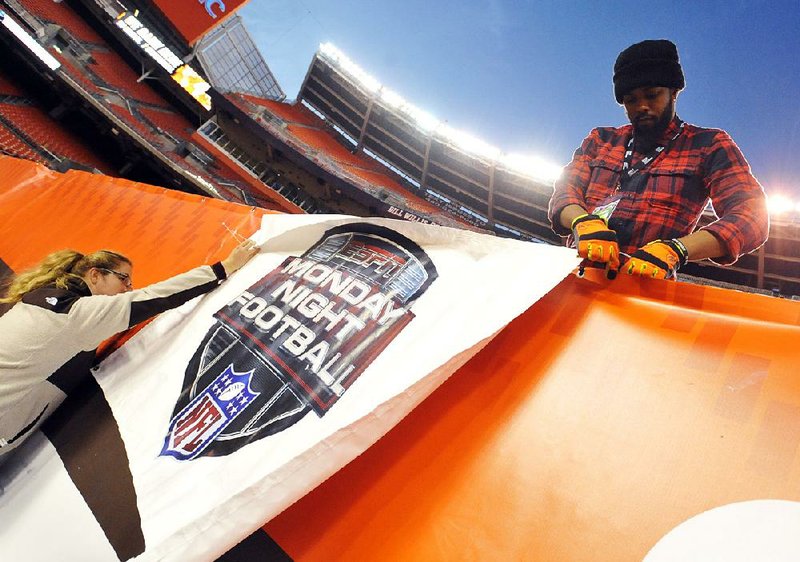LOS ANGELES -- ESPN, the sports network that drives The Walt Disney Co.'s profit engine, has hit a soft patch. Subscribers have fallen by about 7.2 million over the past three years, according to Nielsen, and it's coming off a round of layoffs. As more people cut the cord to watch programming online, its perch on top of the pay-TV empire is looking unsteady at best.
The network's troubles are a bellwether for one of TV's biggest challenges: the ever-increasing cost of sports rights and whether consumers want to keep footing the bill.
The conundrum was reflected in Disney's quarterly earnings Tuesday. Even though Star Wars: The Force Awakens helped Disney's earnings soar 32 percent to a record $2.9 billion, its television profits slumped by 6 percent, in part due to increases in the cost of sports-broadcast rights. It was Disney's second profit decline in the TV segment in the past four quarters. Shares fell 4 percent to $88.40 in after-hours trading, the lowest level in more than a year.
Major media companies have invested $130 billion in sports rights over the next several years, Morgan Stanley analyst Benjamin Swinburne said in a recent investor presentation. But the cost of those rights is increasing faster than the revenue those companies reap.
Leading the pack of big spenders: Disney and its ESPN juggernaut, which accounts for an estimated 29 percent of those long-term contract rights, from Monday Night Football to the NBA playoffs. Should the ad market falter and the pay TV audience decline even faster than its current 1 percent a year -- the "bear case" -- Disney's overall profit growth rate for the next four years could be nearly halved, Swinburne said.
ESPN's impact at Disney is huge because it leads the cable networks division that accounted for nearly half of Disney's operating income last year. Sports rights "may ultimately turn into more risk than reward," Swinburne said.
There are plenty of signs that the cost of broadcasting sports is butting up against consumers' willingness to pay.
After paying more than $8 billion for the rights to televise Los Angeles Dodgers baseball games in 2013, Time Warner Cable Inc. still hasn't reached deals with other distributors for the majority of L.A. homes. Distributors don't think fans will tolerate a price increase even though the dispute is about to drag into a third season.
Last fall, Comcast dropped the YES Network that is home of New York Yankees baseball and Brooklyn Nets basketball, citing high costs and low viewership.
And CBS announced last week that it would split the cost of broadcasting Thursday Night Football games with NBC, letting each network air five games, in a move that could help CBS trim its losses on the deal by $100 million next season alone, by Swinburne's reckoning.
All of these events point to trouble for sports rights buyers. These companies agree to pay sports leagues annual increases in multiyear deals, but are now looking at a steady decline in pay TV subscribers.
"The tradeoffs being made to get these rights raise the question of how long this trend can be sustained," Barclays analyst Kannan Venkateshwar wrote in a recent report.
Sporting events may attract large audiences, garner an outsized share of advertising revenue and offer a showcase for promoting other TV shows. But networks such as ESPN still get most of their revenue from fees paid by cable and satellite subscribers.
Business on 02/10/2016
